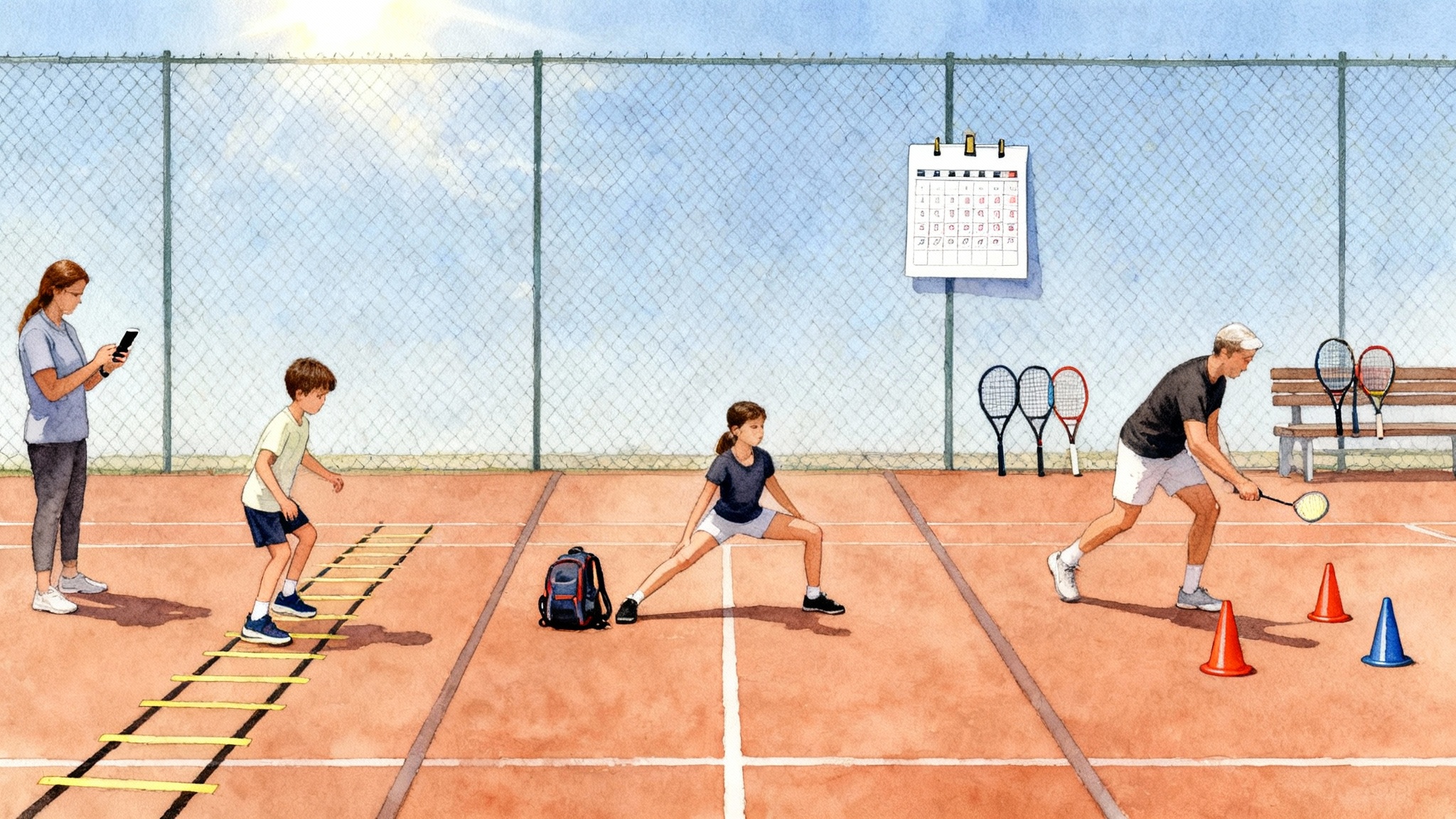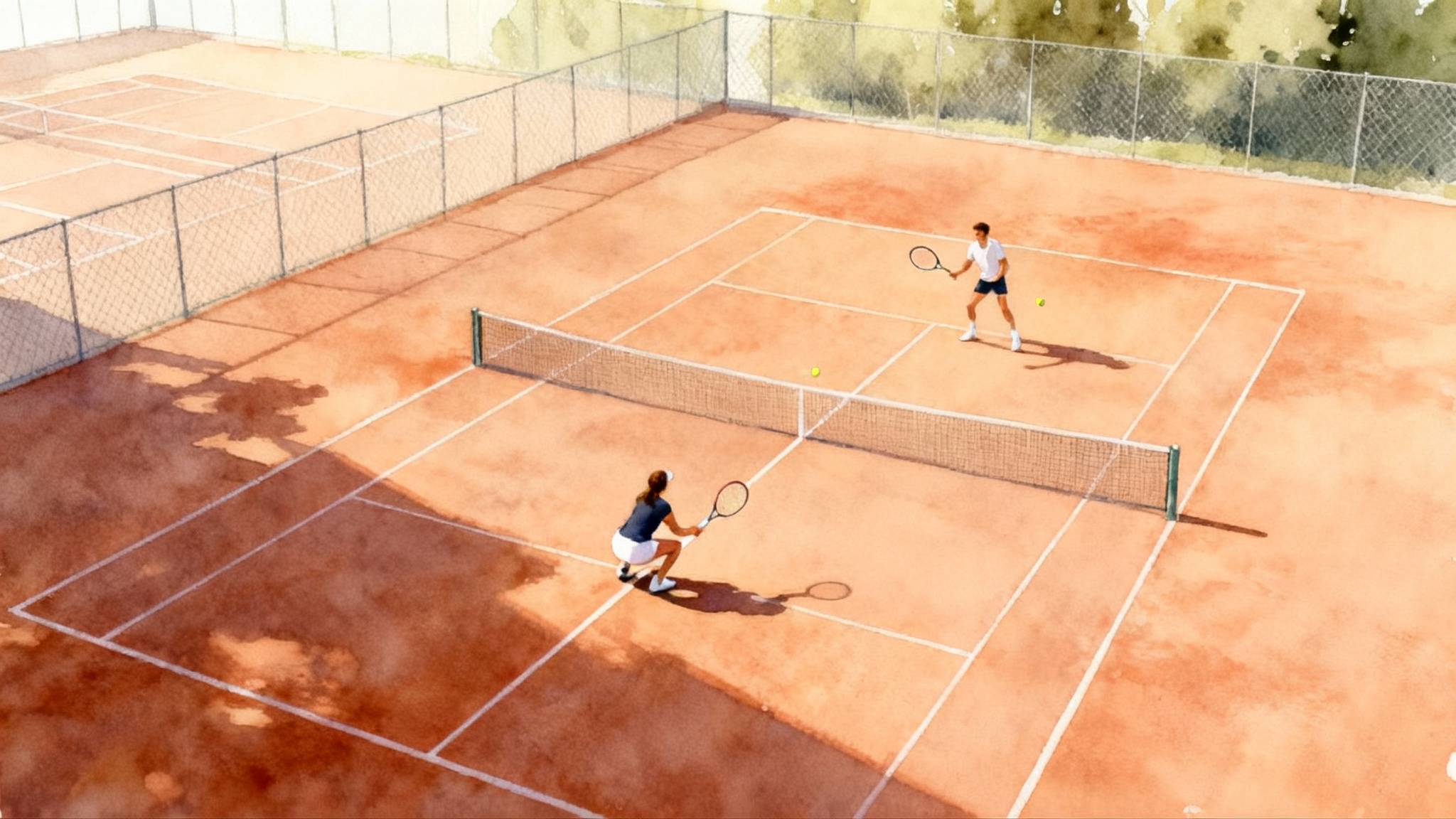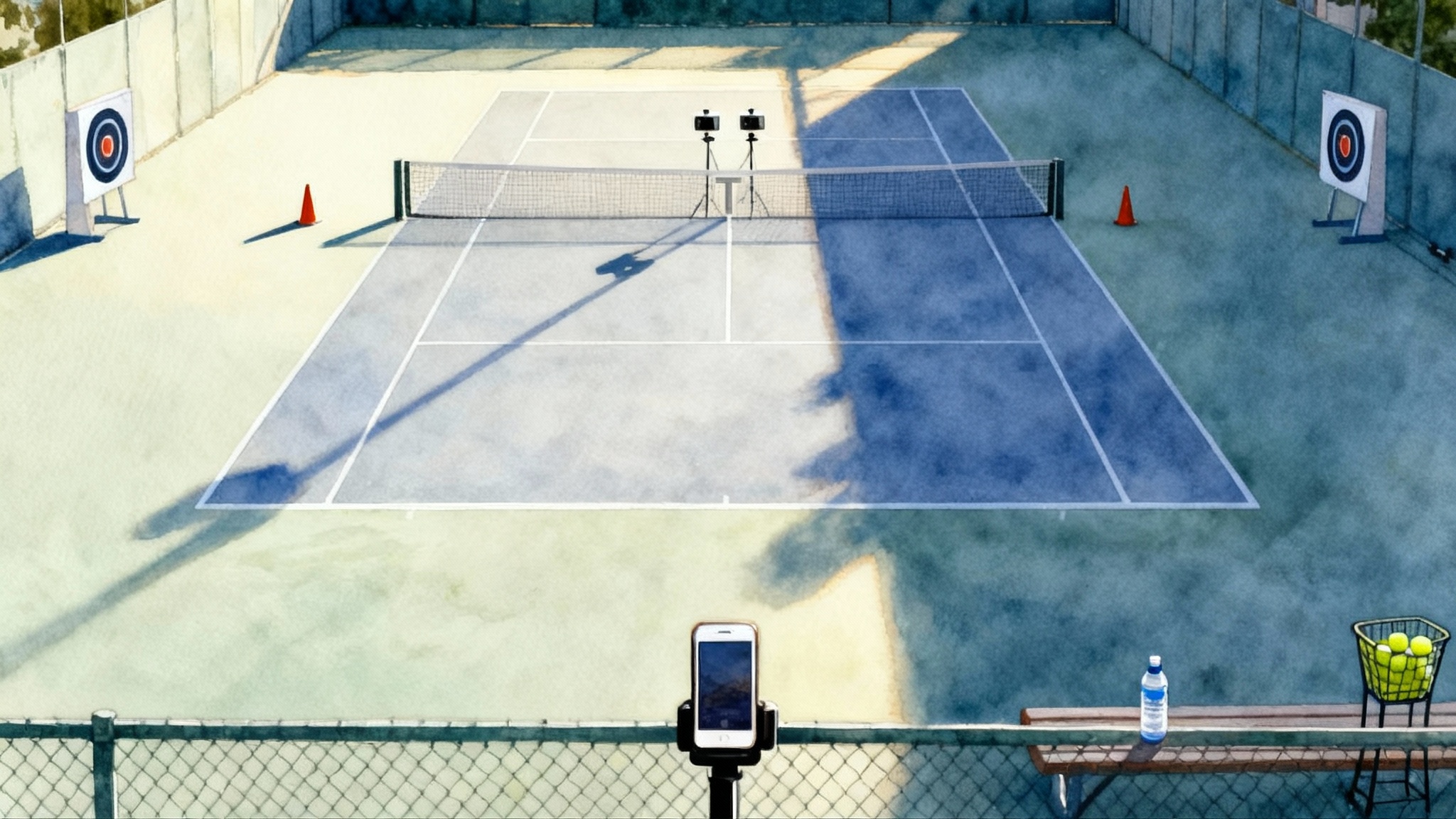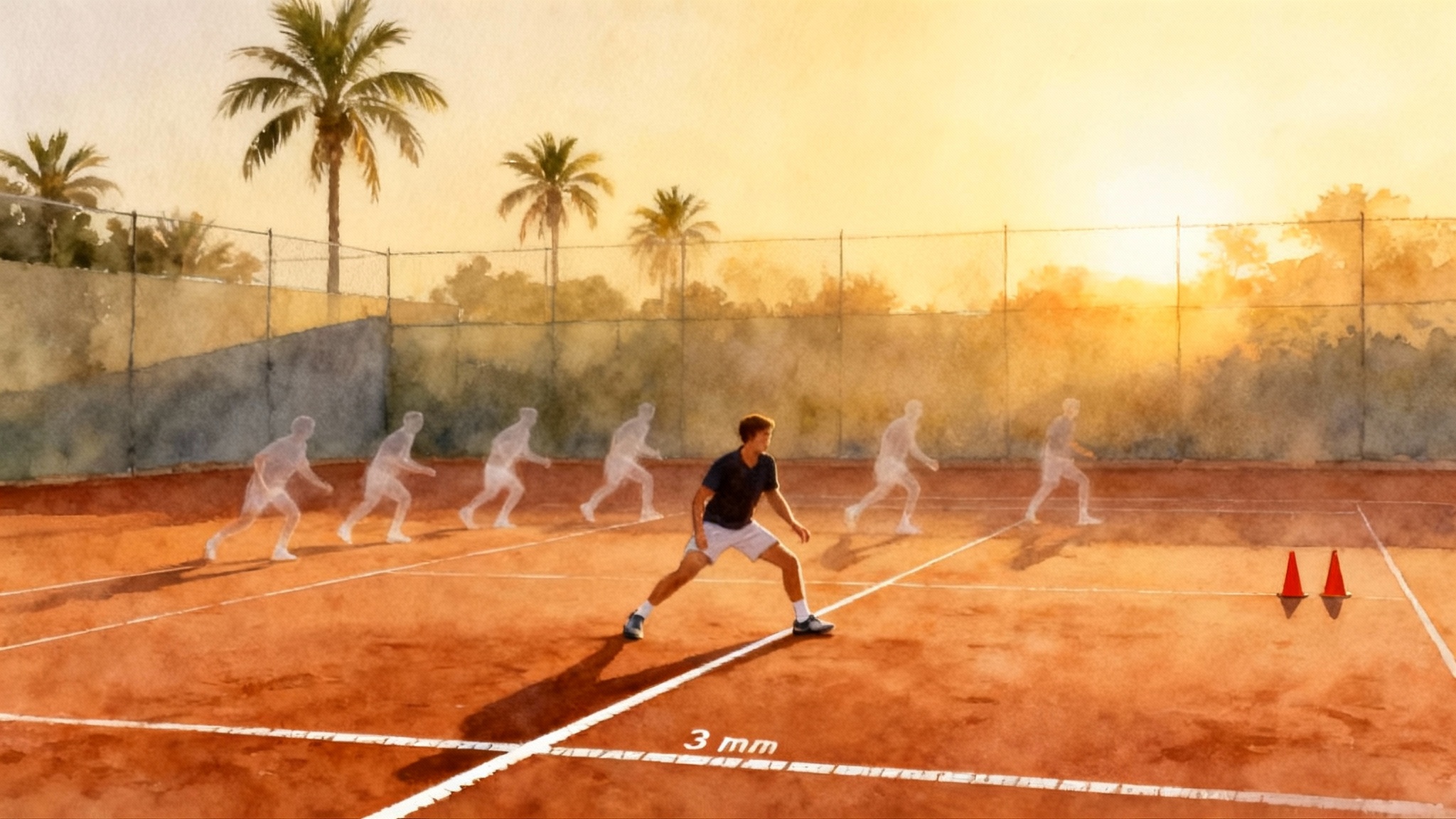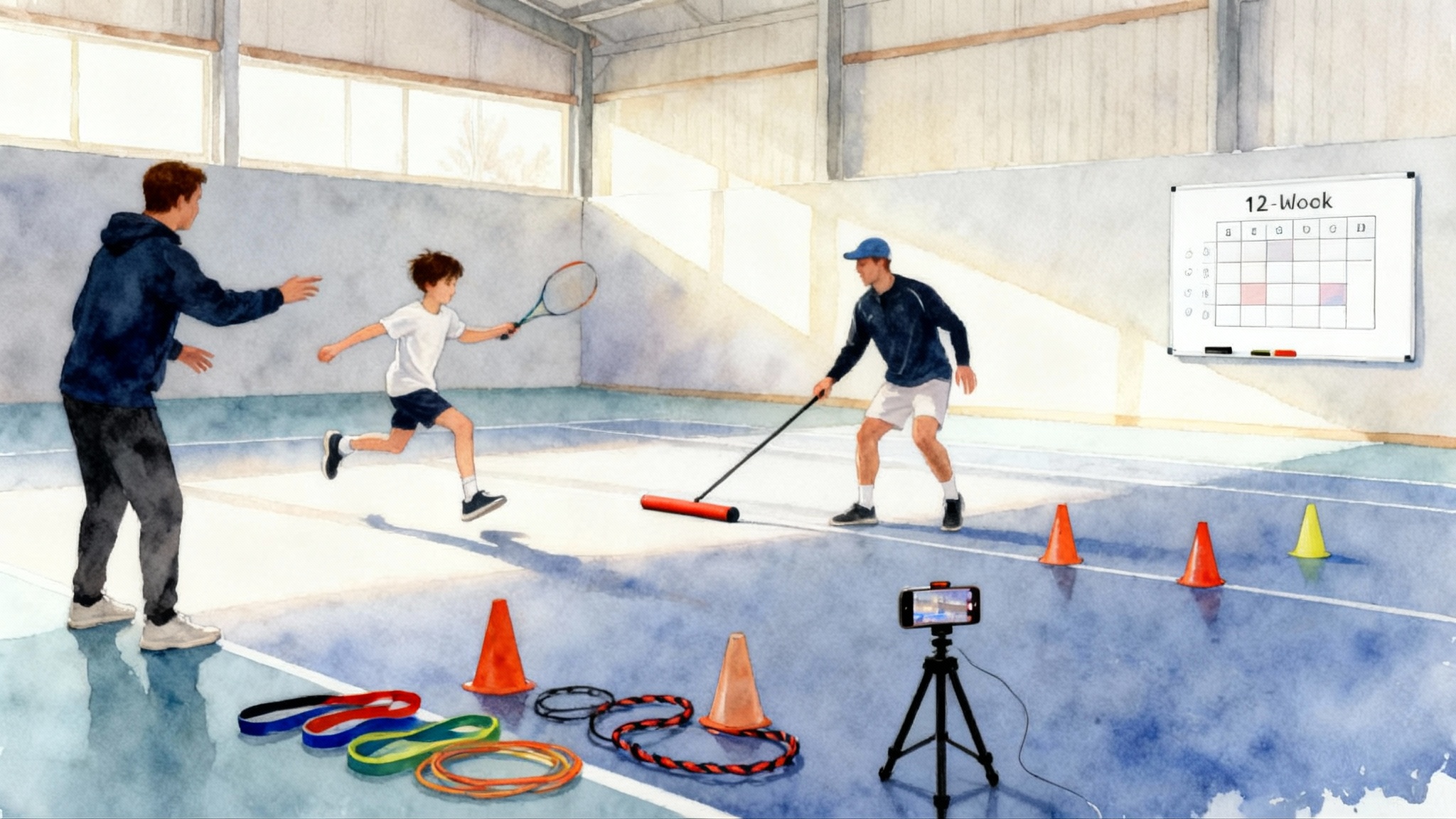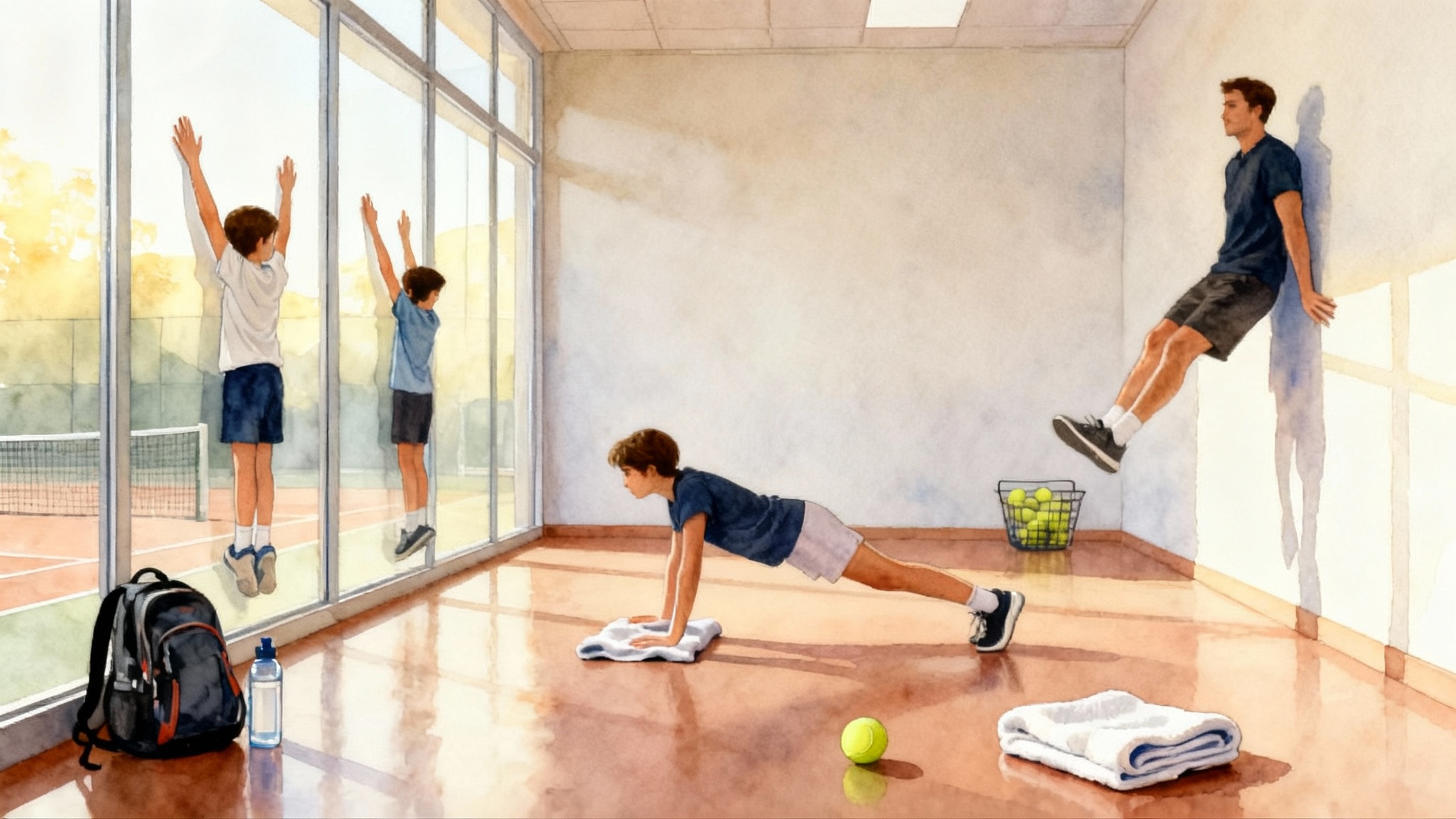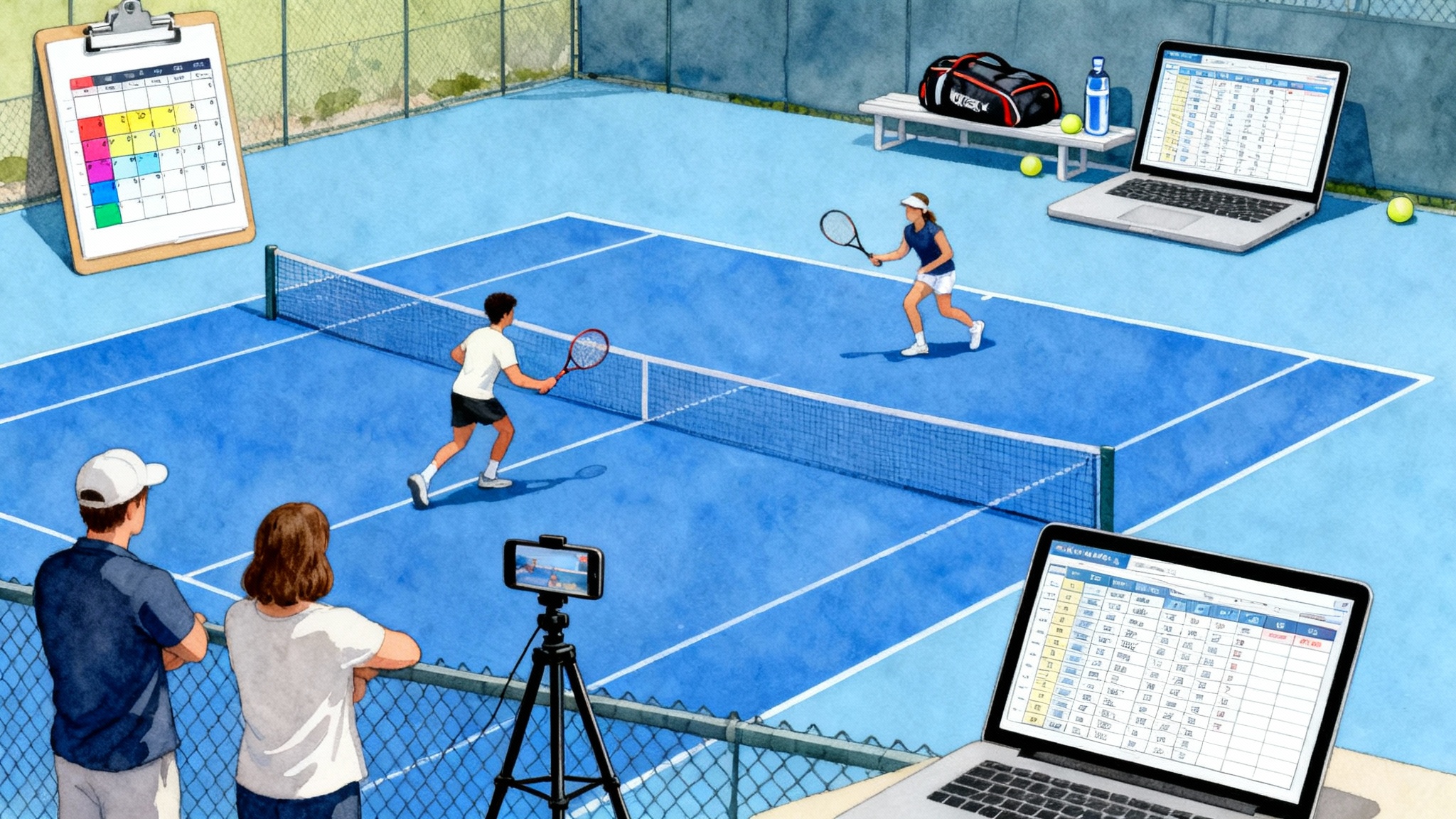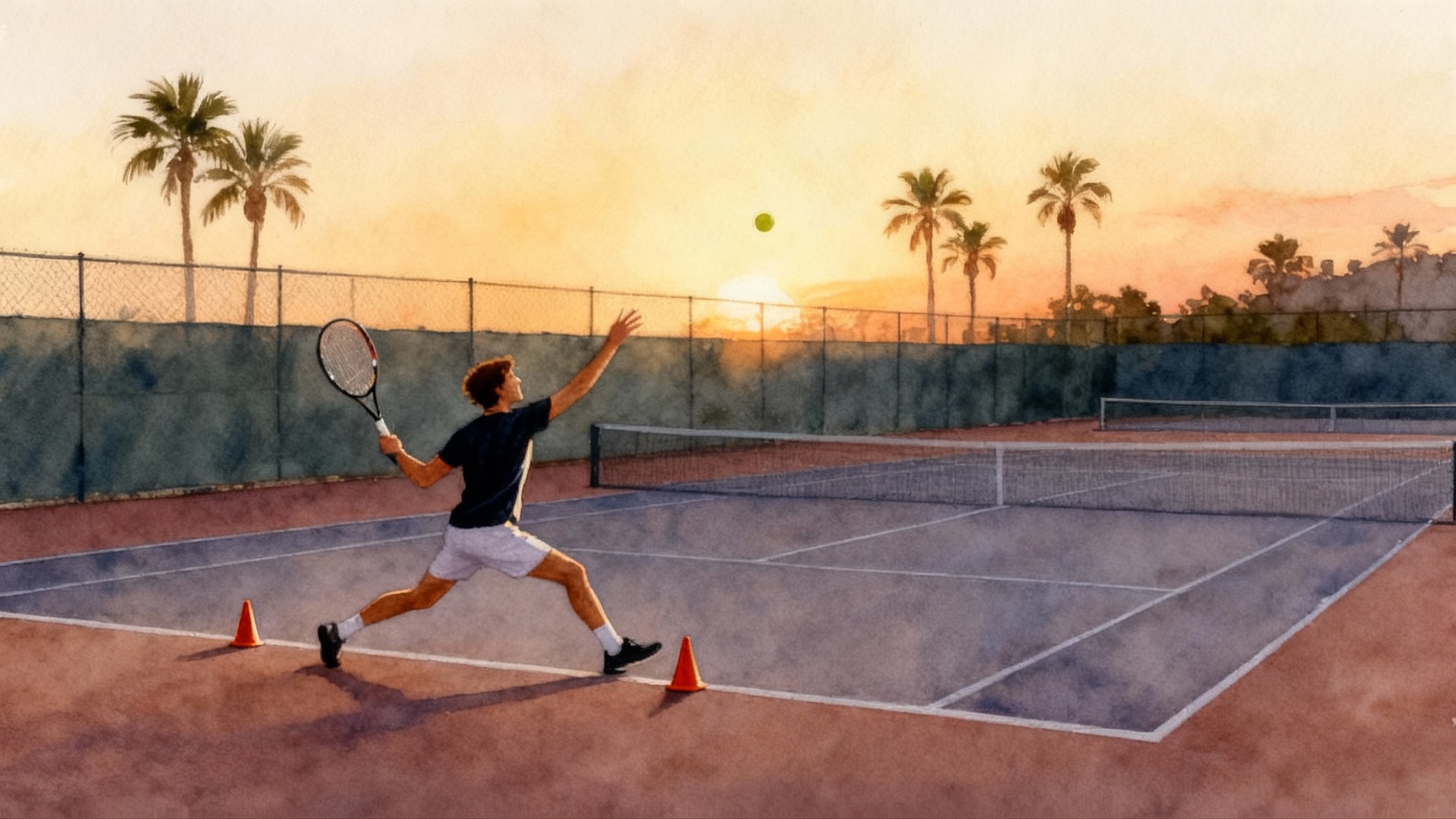Growth-Spurt Playbook for Junior Tennis: Training and Technique
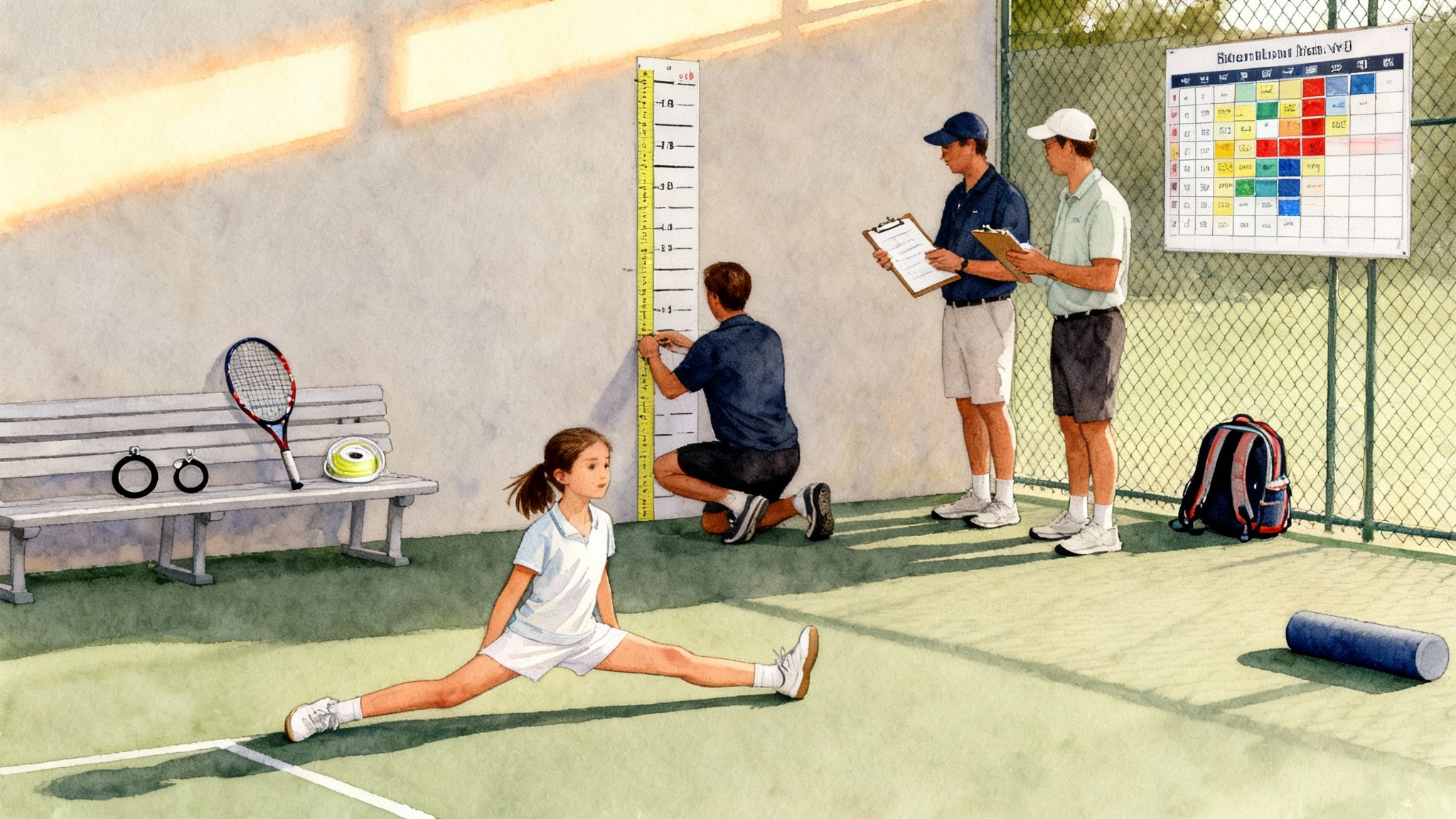
Why growth spurts change the game
Between ages 10 and 16, many players hit peak height velocity, the fastest year of growing they will ever experience. Bones lengthen first, muscles and tendons adapt more slowly, and coordination can dip even as the body gets taller. That mismatch explains why a smooth mover in spring can look awkward in fall and why aches appear even when effort seems unchanged. Training that ignores this window risks overuse problems at the knee, heel, and lower back. Training that respects it turns a vulnerable year into a launchpad for speed, reach, and power.
This playbook turns science into simple actions for parents and coaches. You will learn how to spot peak height velocity early, how to dial training loads, how to temporarily simplify stroke shapes, how to adjust grip size and string tension, how to rebalance court time against strength and mobility, and how to schedule tournaments around school. You will also find 0-6-12 month checklists, sample weekly plans, and red flags that say it is time to rest or see a clinician.
How to spot peak height velocity early
Think of growth like a hill. Peak height velocity is the steepest part. You do not need a lab to notice the slope getting steeper. Use these cues:
- Clothes and shoes suddenly get small. Two shoe sizes in a school year is a strong tell.
- The player looks lanky. Elbows, knees, and feet seem to arrive early in movements.
- Coordination dips for a few weeks. Tosses drift, timing feels late, and balance on landings is shaky.
- Morning stiffness increases even when training is steady.
- Height jumps by more than 1 centimeter per month for several months.
Simple home tracking helps:
- Measure height monthly, same time of day, barefoot, heels and back against a wall. Mark the wall with painter’s tape and date it.
- Track wingspan. When wingspan begins to outrun height and the monthly height marks climb faster, assume the player is nearing peak height velocity.
Treat these signs as a weather forecast. They do not mean stop. They mean plan.
Red-flag symptoms that change the plan today
Keep the following on a shared list for parents, players, and coaches. These are not normal growing pains and should change training immediately:
- Knee pain at the bump below the kneecap that worsens with jumping or kneeling, or that lingers after practice.
- Heel pain at the back or bottom of the heel that increases with running or sprint starts.
- Persistent low back pain that is worse with bending backward or serving, especially if it lasts more than a week.
- Pain that wakes the player at night, limping, swelling that does not settle, or pain above a 5 out of 10 that persists across two practices.
- Numbness, tingling, or weakness in a limb.
Action: downgrade to low impact court movement, replace groundstrokes with shadow swings and feeding, switch to cycling or swimming for conditioning, and book a sports medicine evaluation. Do not push through these signals.
Dial the training load to match the body
During growth spurts, tissues need more time to recover. Instead of a hard weekly quota, use a simple dashboard that guides day-to-day choices.
The four-signal dashboard
Check these four signals every evening and before practice. Rate each from green to red.
- Sleep: at least 8 to 9 hours for teens. Green if yes. Yellow if 7. Red if under 7 or if sleep is restless.
- Soreness: general muscle soreness that fades with warm up is yellow. A single hot spot that gets worse with play is red.
- Mood and focus: upbeat and focused is green. Irritable or distracted is yellow. Flat or disengaged is red.
- Pain during tennis: none or 1 to 2 out of 10 is green. Three to 4 is yellow. Five plus is red.
What to do with the colors:
- All green: regular session. Keep intensity but cap volume.
- Any yellow: shorten live ball by 25 percent, add longer rest between drills, and end with mobility and isometric strength.
- Any red: no live hitting or serving. Use skill games at low impact, movement skills, and technique shadowing. End with recovery work.
Weekly volume caps that respect school
Use the player’s age and school load to set a baseline, then scale with the dashboard.
- Ages 10 to 12 during school: 3 to 4 court sessions per week, 60 to 90 minutes each. One is match play. Two short strength and movement sessions of 20 to 30 minutes. One full day off.
- Ages 13 to 16 during school: 4 to 5 court sessions per week, 75 to 120 minutes each. One or two are match play. Two strength and movement sessions of 30 to 45 minutes. One full day off.
- Off school weeks: add at most one extra court session or extend two sessions by 15 minutes. Never increase both in the same week.
Conditioning rules of thumb
- Sprinting beats jogging. Use 6 to 10 sprints of 10 to 20 meters with full recoveries instead of long runs.
- Jumps should be few and crisp. Ten to 20 total landings per session are enough during a growth spurt.
- Serve counts matter. Cap serves at 40 to 60 quality reps in a practice when growth-related back or heel symptoms are present.
Simplify stroke shapes while the body lengthens
Growth changes levers. Keep timing simple and reduce stress on hotspots with these temporary tweaks. Restore the full style once coordination returns.
Serve
- Use a platform stance to reduce extra moving parts.
- Lower the toss slightly and aim for a three quarter speed first phase of the hit. Keep the same tempo for all serves on a given day.
- Favor kick and slice when back pain or heel pain is brewing. Topspin shapes reduce peak extension stress.
- Keep total serves in a single block, then stop. Do not sprinkle serves throughout the session.
Forehand
- Shorten the backswing to a compact half loop. Cue: “elbow leads, racket follows.”
- Favor height and margin. Windows above the net buy time for a growing arm path.
- Emphasize contact in front with a firm wrist. This protects the elbow during fast growth.
Backhand
- Two hands for most juniors provide more stable contact during growth. If the player uses one hand, shift to a neutral stance and contact earlier to spare the back and shoulder.
- Cue bend at the hips, not the spine, on preparation. Keep the chest tall through contact.
Movement and patterns
- Keep the first step rule: split, choose, go. Do not demand fancy recovery steps when timing is off. For a refresher on fundamentals, revisit the split step to shuffle patterns.
- Use two-ball patterns that alternate crosscourt and down the line. Predictable rhythm restores confidence.
Equipment updates that protect growing bodies
Small, frequent adjustments prevent big problems later.
- Grip size: reassess every three months. If the index finger can no longer fit snugly between fingertips and palm when holding the handle, increase one grip size or add an overgrip temporarily.
- Racquet length and weight: if the player must choke up more than a finger width to control the head, the frame is likely too long or heavy. Err toward a frame the player can accelerate and stop comfortably.
- String choice: favor softer setups such as multifilament or a natural gut hybrid during growth spurts. If polyester is used, keep tension low and pair it with a softer cross string.
- String tension: lower by 2 to 4 pounds when elbow, wrist, or shoulder niggles appear. Check feel and control again after two sessions.
- Shoes: replace when outsole tread is half gone or when the heel counter feels sloppy. Heel pain often improves with a fresh, supportive shoe.
Rebalance court time, strength, and mobility
Growing players need more raw materials for power: strong legs and hips, mobile ankles and thoracic spines, and robust tendons. Replace some live ball with short, specific strength and mobility work that protects hotspots and boosts long term performance. If you need a practical template, see our in-season strength plan.
A simple menu
- Feet and ankles: standing calf raises 3 sets of 12, single leg holds 3 sets of 20 seconds, pogo hops 3 sets of 10.
- Knees and quads: split squat holds 3 sets of 20 to 30 seconds, then slow split squats 2 sets of 8 per side.
- Hips and glutes: hip bridges 3 sets of 10 with two second holds, lateral band walks 2 sets of 12 steps each way.
- Trunk and back: dead bug or hollow hold 3 sets of 20 to 30 seconds, side plank 2 sets of 20 seconds per side.
- Shoulders and scapulae: band pull aparts 3 sets of 12, wall slides 2 sets of 10.
- Mobility: ankle rocks, hamstring stretch with a strap, and thoracic spine rotations. Spend 6 to 10 minutes total.
These can be done anywhere with a band and a mat. Keep the total under 30 minutes. Quality beats quantity.
Schedule tournaments around school without burning the candle
The goal is steady exposure, not a streak of weekends away that drains school focus and ramps injury risk.
- Anchor the calendar with school test weeks first. Choose events that avoid those windows.
- Use two hard tournament weeks in any eight week span. The other six weeks should be training focused with one match play day.
- After any two day tournament, take a no serve day followed by a light hitting day.
- Travel time counts as load. If the car ride is more than two hours, schedule mobility and a short walk on arrival.
- Build a 12 week block: weeks 1 to 3 build, week 4 compete, weeks 5 to 7 build, week 8 compete, weeks 9 to 11 build, week 12 compete or recover depending on school.
What this looks like at Milwaukee Tennis and Education Foundation
Programs like the Milwaukee Tennis and Education Foundation work with players who are growing fast while balancing school and community commitments. Here are composite examples that mirror the adjustments their coaches make.
-
Mia, age 12, gained five centimeters in one semester and developed heel pain. The coaches cut live serves to 40 quality reps, switched her strings to a softer setup at a slightly lower tension, and added calf raises and ankle mobility twice per week. Her forehand loop became a compact half loop with a focus on topspin height. After three weeks, her pain settled, and she returned to full match play with a cap on total jumps.
-
Jalen, age 15, hit a coordination dip and low back tightness during a growth burst. Coaches moved him to a platform serve stance and a lower toss, added split squat holds and side planks, and scheduled his next tournament three weeks after final exams instead of the weekend before. He kept training continuity and returned to serving at full tempo without discomfort.
The pattern in both cases is simple: lighten the parts that irritate, keep skills sharp with predictable patterns, and add targeted strength so the growth spurt builds capacity instead of setbacks.
Sample weekly plans you can copy
Below are two ready-to-use templates. Adjust duration with the four-signal dashboard.
School term, ages 10 to 12
- Monday: 75 minutes court. Patterns and height over the net, 15 minutes serves. Finish with 10 minutes of mobility.
- Tuesday: 25 minutes strength and movement at home. Calf raises, split squat holds, dead bugs, band work.
- Wednesday: 75 minutes court. Live ball 30 minutes, predictable two ball drills, 10 minutes return practice. End with 10 minutes of isometrics.
- Thursday: Off or 20 minute walk and stretch.
- Friday: 60 minutes court. Point play with scoring games. Total serves capped at 40. End with 10 minutes recovery.
- Saturday: 30 to 40 minutes fun conditioning. Sprints 8 by 15 meters, skipping rope, relay games.
- Sunday: Full rest.
School term, ages 13 to 16
- Monday: 90 minutes court. Crosscourt patterning, approach and volley. 15 minutes serve and return with a platform stance.
- Tuesday: 40 minutes strength. Split squats, hip bridges, side planks, band pull aparts, ankle plyometrics 3 by 10.
- Wednesday: 90 minutes court. Live ball 30 minutes, situational games 30 minutes. Serve count capped at 60.
- Thursday: 30 minutes mobility and recovery. Foam roll, ankle rocks, thoracic rotations, easy walk.
- Friday: 90 to 120 minutes match play. Finish with 10 minutes of easy shadow swings focused on rhythm.
- Saturday: 30 to 45 minutes conditioning. Hill sprints 6 by 12 to 15 seconds with full rest. Short agility ladders for foot rhythm.
- Sunday: Full rest or light cycle.
Off school week, either age group
Add at most one extra court session or extend two sessions by 15 minutes. Increase only if the dashboard stays green for three days in a row.
The 0-6-12 month checklists
These lists keep everyone coordinated. Print them and check items off.
Now to 1 month
- Start the monthly height mark on a wall and log in a shared note.
- Switch to the four-signal dashboard at practice.
- Audit gear: confirm grip size, check shoe wear, review string type and tension.
- Cap serve reps and total match play if knee, heel, or back symptoms appear.
- Add two short strength and mobility sessions per week.
- Share the red-flag list with the player and school coach.
Months 2 to 6
- Reassess grip size and shoe fit every three months.
- Progress strength: add slow split squats and single leg bridges, increase plank holds to 30 to 40 seconds.
- Expand conditioning with short sprints and controlled hops. Keep landings crisp and counts low.
- Plan the 12 week school calendar with two tournament windows and buffer weeks around exams.
- Introduce a return to full stroke shapes if coordination is improving and dashboard stays green for two weeks.
Months 7 to 12
- Review racquet weight and balance. Move to a slightly heavier frame only if the player accelerates and stops the head comfortably.
- Experiment with a small string tension increase for control if no arm symptoms and contact quality stays high.
- Progress strength to moderate loads in split squats and hip hinges with a backpack or light dumbbells.
- Add more complex movement: change of direction drills and two step recovery patterns after shots.
- Evaluate the year: what training changes correlated with fewer red flags and better match stamina.
The simple measurement toolkit
You do not need fancy tests. Keep it practical.
- Wall height mark and log.
- Wingspan measure twice per year.
- Shoe fit check monthly.
- Serve count tally per practice in the notes app.
- A one page training log with boxes for sleep, soreness, mood, and pain.
Coach and parent quick answers
-
How much is too much tennis during a growth spurt? If the player cannot keep all four dashboard signals out of the red for two days in a row, reduce court time or intensity by a quarter and increase recovery until signals improve.
-
Should we stop strength training while growing? No. Replace heavy maximal work with isometrics and slow tempo basics. Stronger tendons and better landing mechanics protect knees and heels. For structure, adapt the in-season strength plan to the player’s schedule.
-
Is polyester string bad for juniors? It is about dose and timing. During growth, softer strings and lower tensions reduce arm stress. If you keep some polyester for control, use a hybrid and keep tension low.
-
What matters most for technique right now? Contact quality and simple rhythm. A compact forehand, a platform serve stance, and predictable patterns keep timing intact while the body catches up.
-
How do we know when to ramp back up? When monthly height gains slow, coordination looks smoother for two weeks, and the dashboard is consistently green, gradually restore full volumes and stroke shapes.
A final word to tie it together
Growth spurts can make a junior feel like a guest in a taller body. The job for adults is to translate that awkward chapter into momentum. Measure a little. Listen a lot. Adjust training volume and technique with purpose. Update gear before it pinches. Place tournaments where school and recovery allow. Programs like the Milwaukee Tennis and Education Foundation show that steady, practical choices protect health and unlock performance. If you follow the dashboard, use the checklists, and keep the conversation open, the tallest months of childhood can become the most empowering months of tennis development.
